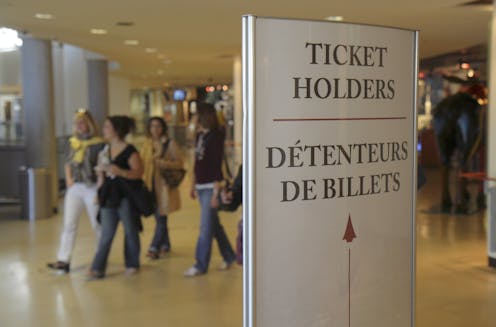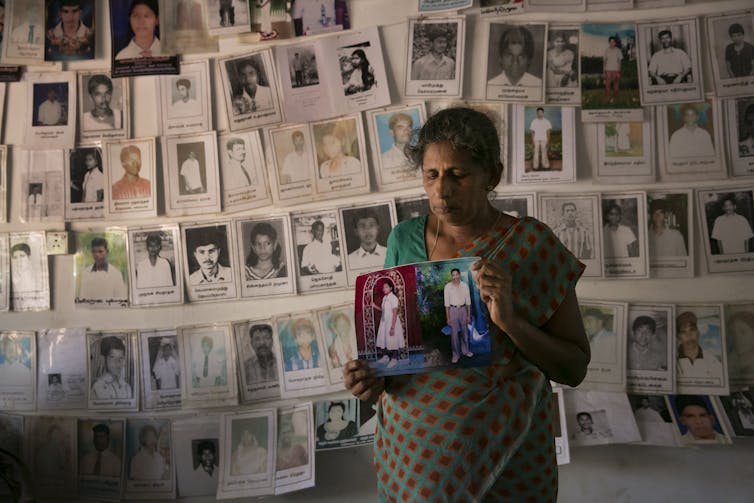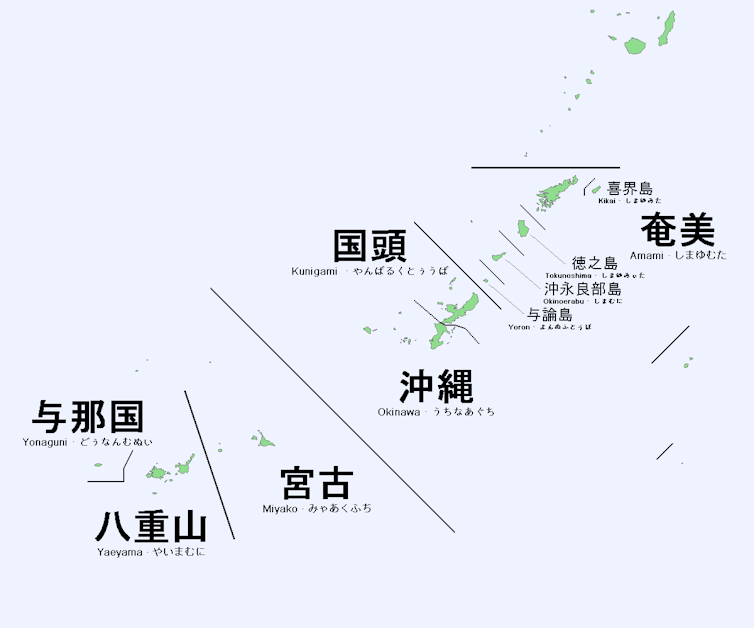Conflicts over language stretch far beyond Russia and Ukraine
It’s common for people to live near others who speak a different – but similar – language. But generally, they handle their differences without violence.

One key element of the war between Russia and Ukraine is Russian President Vladimir Putin’s claim that the two countries share not just history, but also a common language. Both are attempts to diminish Ukrainian claims of an independent identity from Russia. In our research on language conflict, we have seen that using language as a tool of politics and power is not at all rare.
There are many instances around the world of people who speak different languages living alongside each other – whether in an awkward peace, like French speakers in English-dominated Canada, or with some low-level conflict, like Kurdish speakers in Turkish-dominated Turkey.
It’s also common for people who live near an international border to speak the language of the neighboring country, such as Russian-speaking minorities in Latvia and Estonia; a Polish-speaking minority in Lithuania; the Hungarian-speaking minority in Slovakia; the Mongolian-speaking minority in China; and the Korean-speaking minority in Japan.
However, none of these have devolved into war, at least not in many decades.

Intervention doesn’t have to mean invasion
Perhaps the most direct foreign involvement relating to linguistic differences and similarities is the Sri Lankan Civil War, which lasted from 1983 to 2009 and claimed more than 100,000 lives.
The country’s Tamil-speaking separatists engaged in terrorist attacks and suicide bombings against the Sinhala-speaking majority, which had oppressed them for decades. The attacks sparked violent backlash from the Sinhalese and prompted India – home to 63 million Tamil speakers, which is about three times Sri Lanka’s total population – to send in a peacekeeping force in 1987.
Indian troops occupied northern Sri Lanka in an effort to protect Tamil speakers, but they made no effort to conquer the island. After two years, they withdrew completely, having failed to impose peace.
Is it that different?
In other cases, people’s claim that they speak different languages from their neighbors is questionable – such as Serbian and Croatian. In 1850, writers and linguists from Serbia and Croatia signed the Vienna Literary Agreement, declaring their intention to create a unified Serbo-Croatian language. As a result, until the 1991 collapse of Yugoslavia, the people who described themselves as Bosnians, Serbs and Croats called the language they all spoke and understood “Serbo-Croatian.”
After 1991, though, the collapse of the Soviet Union removed the external threat of Soviet intervention that had held Yugoslavia together during the Cold War. Ethnic hostilities held over from World War II, especially between Serbs and Croatians, reemerged. That led both to armed conflict and to each group’s calling the language they spoke by that group’s own name – even though it was no different from the Serbo-Croatian they had spoken before.
Other examples of mutually intelligible dialects being counted as languages include the Czech and Slovak spoken in the Czech Republic and Slovakia, Hindi and Urdu of India and Pakistan, and Norwegian and Danish in Norway and Denmark.
Is it really the same?
There are also instances in which it is claimed that two groups speak the same language, but actually don’t. One example of this are the Ryūkyūan languages spoken by natives of the Ryūkyū Islands – the best known of which is Okinawan – and Japanese. The Ryūkyūan languages split from what would become the mainstream Japanese language over 2,000 years ago, and are not mutually intelligible.
However, when the Japanese annexed the Ryūkyū Islands as a province in 1879, they papered over these differences, claiming that Ryūkyūan was just a Japanese dialect. And by 1907, in its quest to promote national unity and homogeneity, Japan legislated against the Ryūkyūan languages, classifying them as inferior and improper varieties of true Japanese language, and barred children from speaking their native Ryūkyūan languages in school.

The real difference
Ultimately, the determination of whether two groups speak different languages or dialects is partly objective and partly determined by politics and power.
A key difference was described to Yiddish linguist Max Weinreich by an attendee at one of his lectures in the mid-1940s: “A language is a dialect with an army and navy.” The Ryūkyūans did not have a military. The Ukrainians do.
Stanley Dubinsky owns shares in ConflictAnalytiX LLC.
Harvey Starr has shares in ConflictAnalytiX LLC
Michael Gavin is a project consultant/analyst for ConflictAnalytiX LLC.
Anyssa Murphy does not work for, consult, own shares in or receive funding from any company or organization that would benefit from this article, and has disclosed no relevant affiliations beyond their academic appointment.
Read These Next
The celibate, dancing Shakers were once seen as a threat to society – 250 years later, they’re part
‘The Testament of Ann Lee,’ Mona Fastvold’s 2025 film, depicts part of the long history of Shaker…
From truce in the trenches to cocktails at the consulate: How Christmas diplomacy seeks to exploit s
World leaders like to talk up peace at Christmastime. But alongside the tales of seasonal breaks in…
People are getting their news from AI – and it’s altering their views
Even when information is factually accurate, how it’s presented can introduce subtle biases. As large…





